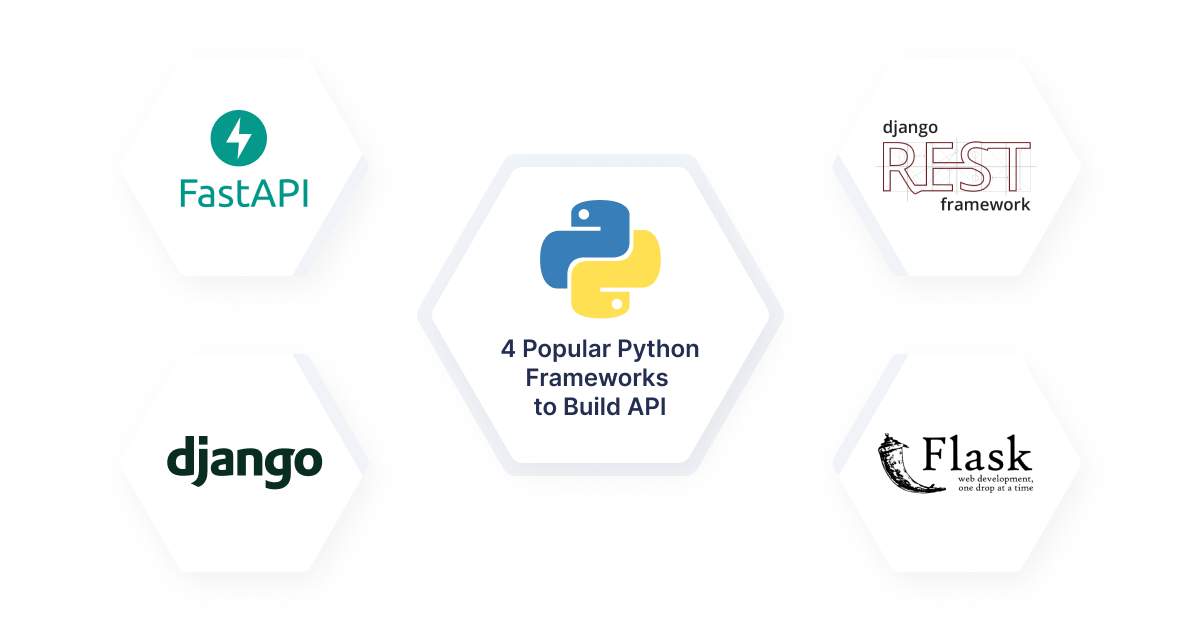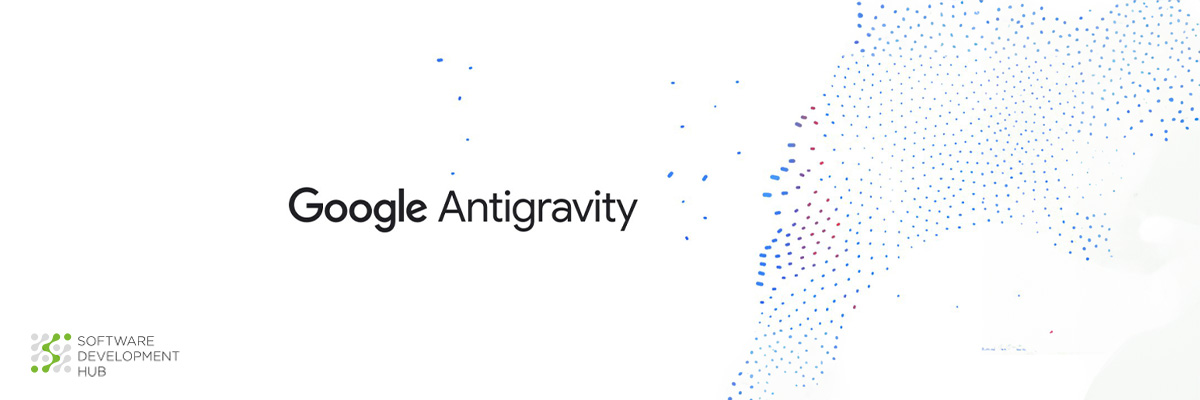How to Build APIs in Python: Popular Frameworks
At the moment, we can definitely say that Python is one of the most widely used programming languages. Many developers prefer to develop with it because it can offer ease of use, understandable syntax (which is similar to English), as well as flexibility and universality of applications. Of course, the development process of any project does not happen without the implementation of APIs in it. It is a very important part of any software or online product. But with Python web frameworks the API development process can be fast and efficient.
What are APIs?

Before we cover how to build APIs in Python issue, we'll take a brief look at what APIs are and why they're important.
So an API (Application Programming Interface) is a specific set of mechanisms and rules that allow two web products or applications to "communicate" with each other. To describe it in simple terms, the process works as follows:
- A client application forms and sends its request to another application through the API.
- The API, in its turn, contacts the application-provider and passes the request to it.
- The "Supplier" application gives its answer to the API, and than API forwards the result back to the client application
In other words, the main function of the API is that you can use one application and communicate through it with another. This makes it easier to work in applications and improves the user experience. In addition, such an extensive set of features and functionality, make any product more in demand.
Popular Python Frameworks for working with APIs
Frameworks are designed to make it easier for developers to work on a project. They help by offering ready-made templates and code parts, and thus allow developers to simply finish writing the part they need. Afterwards, everything is merged into one coherent project. That way, development time is reduced, and the team can be focused on working on the main tasks of the project.
Read also: 5 Python Frameworks for Web App Development
Flask
If you are looking for a good and straightforward tool for working with APIs during a small project, then Flask is what you need. This microframework is very easy and user-friendly, especially for beginners. It can offer you basic features without all the extra stuff.
Also, there is no ORM in this framework, which gives you full control over the behavior of the application. In addition, a big advantage of Flask is its easy scalability if needed.
Among the possible disadvantages of this framework is the lack of security. But on the whole, it is one of the most ideal choices for the development of small web products.
- Flask is a lightweight and flexible framework that provides a simple and easy-to-use interface for building APIs.
- It follows a microframework approach, which means it provides only the essential tools for building APIs and leaves other functionalities as optional extensions.
- Flask allows you to have fine-grained control over your API structure and implementation.
- It has a large and active community, which means you can find numerous extensions and resources to enhance your API development process.
- Flask is suitable for small to medium-sized projects and offers great flexibility and customization options.
Here's a general outline of the steps involved in getting started with API development using Flask
- Install Flask using pip: pip install flask.
- Create a new Flask application.
- Define routes using decorators to handle different HTTP methods (GET, POST, etc.) and URLs.
- Implement the logic for each route to handle requests and generate responses.
- Run the Flask development server to test your API.
Django REST
This Python framework is considered to be very reliable and full-fledged. Unlike the previous Flask, Django REST can be used in larger and more complex projects. It offers many functionalities, including serialization for ORMs and non-ORMs.
Django REST is widely used by developers because it offers its versatility and security. Also, if you're new to the framework, Django REST can offer an extensive support community that can help you if anything comes up.
The only thing you should know about Django REST is that it's not really suitable for small projects. It would be too complicated for them, and not necessary.
- Django REST Framework (DRF) is a powerful and feature-rich framework built on top of Django, a full-stack web framework for Python.
- DRF provides a set of tools and conventions for building robust and scalable APIs quickly.
- It includes features like authentication, serialization, URL routing, pagination, and more out of the box, reducing the amount of code you need to write.
- DRF follows the Model-View-Controller (MVC) architectural pattern, making it easy to structure and organize your API code.
- It has excellent documentation and a strong community, making it a popular choice for building APIs in Python.
- DRF is well-suited for larger projects and applications that require comprehensive functionality and high-levels of customization.
Installation and setup processes for Django REST Framework:
- Install Django REST Framework using pip: pip install djangorestframework.
- Create a new Django project: django-admin startproject projectname.
- Create a new Django app within the project: python manage.py startapp appname.
- Define models to represent your data and set up the database.
- Create serializers to convert the models into JSON or other formats.
- Define views or viewsets that handle requests and generate responses.
- Configure URL routing and connect the views or viewsets to the URLs.
- Run the Django development server to test your API.
Popular Frameworks for dealing with APIs
Frameworks are intended to make working on a project easier for developers. They can help by offering ready-made templates and pieces of code, thus allowing developers to simply finish code writing the way it is needed. Then, all of this is combined into one coherent project. This way, development time is reduced, and the team can focus on working on the main goals of the project.
Read also: Vue vs React: Which Framework Is Better in 2023
FastAPI
If you're looking for a super high performance, fast, but very intuitive tool for working with APIs, choose FastAPI. This framework is ideal for dealing with large and complex projects.
FastAPI is able to increase your code writing speed up to 300% due to its code compactness and readability. In addition, a very big advantage which all developers love is the ability to reduce the number of bugs and errors in a project by up to 40% thanks to testing the API.
If you want to start working with this framework, you need to make sure you have the appropriate version of Python (starting from 3.6).
- FastAPI is a modern, high-performance framework for building APIs with Python 3.7+ type hints.
- It is designed to be fast, easy to use, and provide automatic validation and serialization of request and response data.
- FastAPI leverages asynchronous programming using Python's asyncio to achieve high performance and handle a large number of concurrent requests.
- It includes features like automatic documentation generation using OpenAPI (formerly known as Swagger) and automatic generation of interactive API documentation.
- FastAPI has gained popularity due to its simplicity, performance, and support for modern Python features.
- It is well-suited for high-performance APIs and real-time applications.
Steps in getting started with API development using FastAPI:
- Install FastAPI using pip: pip install fastapi.
- Create a new FastAPI application.
- Define routes using decorators and specify the HTTP methods and URL paths.
- Implement the request handlers for each route using asynchronous functions.
- Utilize FastAPI's request validation and serialization capabilities with Pydantic models.
- Run the FastAPI development server to test your API.
Outsource with Software Development Hub
These frameworks offer different approaches and features, so the choice depends on the specific requirements of your project. Flask provides simplicity and flexibility, Django REST Framework offers a comprehensive set of features, and FastAPI focuses on high-performance and modern development practices.
Looking for a reliable provider of software development services for APIs? Software Development Hub is a reliable partner in providing outsourcing software development services for startups and existing products.
Our extensive experience and constant tracking of novelties in the IT development industry makes us ready to offer our clients the most innovative solutions for their products.
In addition, thanks to our serious approach to work and prioritization of communication with our client, we always develop solutions that meet all requirements.
Our portfolio includes medical information systems, e-Prescription systems, applications for tracking medicines with a QR scanner, medical ERP systems, etc.
Want a consultation and evaluation of your project? Contact us and we will gladly help you reach your goal!
Categories
About the authors
Share
Need a project estimate?
Drop us a line, and we provide you with a qualified consultation.








